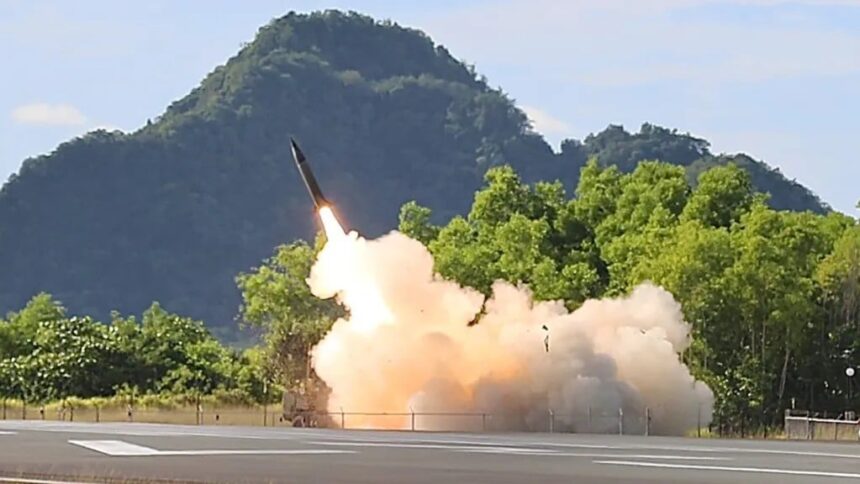The Precision Strike Missile achieved a milestone by successfully targeting a moving vessel in the Pacific for the first time. This demonstration highlighted the capabilities of the U.S. Army’s new missile technology, particularly the Precision Strike Missile (PrSM), which boasts extended range and the ability to hit moving targets. In a groundbreaking exercise, two PrSMs were launched from Palau and struck a moving target more than 40 nautical miles away. This exercise showcased an integrated kill chain involving various advanced technologies, including high-altitude balloons, electromagnetic sensors, drones, and fighter jets. The successful demonstration of the Precision Strike Missile in this exercise underscores the U.S. Army’s readiness to transition to advanced missile systems for potential conflicts in the Pacific region. The military has not yet released live footage of the “Valiant Shield 24” joint sinking exercise, creating uncertainty about the movement of the target vessel, which may have been towed. Live-fire exercises, especially against moving vessels, are uncommon for the U.S. Navy.
A crucial aspect of this exercise was the use of the Autonomous Multi-Domain Launcher (AML), an unmanned system based on the HIMARS platform. Specifically designed for the challenges of the Pacific theater, the AML offers significant autonomous capabilities, allowing for remote operation and deployment in strategically important but underdeveloped areas.
Capable of launching Precision Strike Missiles, 227mm precision-guided rockets, and Army Tactical Missiles, the AML addresses various ground and maritime threats. Equipped with sensors like visible light, laser, radar, and GPS, it can conduct combat operations remotely by receiving target data and launch commands from manned artillery units or network command centers. Its unmanned nature enables quick redeployment and improved survivability, making it a crucial asset in modern warfare.
The development and testing of the Increment 2 Precision Strike Missile, which can target moving maritime targets, represent a significant advancement in U.S. military capabilities. This is especially crucial in potential conflicts in the Pacific, such as those involving the United States and China, where anti-ship ballistic missiles (ASBMs) play a vital role.
The successful use of such missiles demonstrates the U.S. Army’s preparedness for high-stakes maritime engagements and showcases its ability to impact naval operations in the region significantly.
The author, Stephen Xia, a former professor at the Chinese Military Flight Academy and a flying expert, transitioned to a professional military analyst after retiring from military service. He has since closely monitored the global development of military equipment.
Source link





